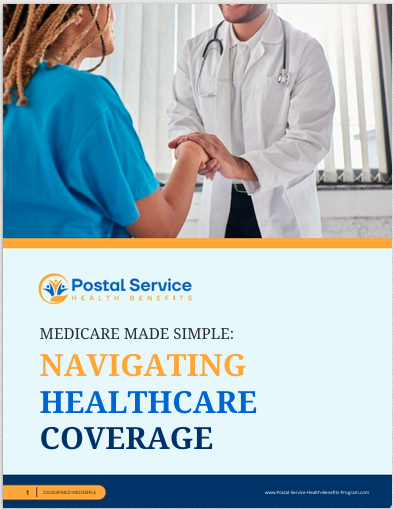Key Takeaways
-
The transition from the Federal Employees Health Benefits (FEHB) program to the Postal Service Health Benefits (PSHB) program changes how postal workers and retirees access healthcare coverage. If you are a retiree, you may be required to enroll in Medicare Part B to keep your PSHB plan.
-
While premium contributions, deductibles, and copayments vary, the government continues to cover about 70% of PSHB premiums, similar to FEHB. Reviewing your plan options is crucial to understanding potential cost changes.
Understanding the Transition from FEHB to PSHB
If you are a postal worker or retiree, the switch from FEHB to PSHB in 2025 is a big deal. This change affects your healthcare coverage, costs, and options moving forward. PSHB is designed exclusively for USPS employees, annuitants, and their families, offering a streamlined system separate from FEHB. Here’s what you need to know about this transition and how it impacts you.
Who Is Affected by This Change?
The PSHB program applies to:
-
Current USPS employees: If you are an active postal worker, your health insurance now falls under PSHB.
-
Postal retirees: If you are retired and enrolled in FEHB, your coverage automatically shifts to PSHB unless you take action during Open Season.
-
Eligible family members: If you have dependents covered under your FEHB plan, their coverage moves to PSHB.
If you are covered under a spouse’s non-postal FEHB plan, you can stay enrolled in that plan rather than switching to PSHB.
What Happens to Your Coverage?
-
No automatic loss of coverage: If you are already enrolled in FEHB, you don’t lose coverage. Instead, you are automatically transferred to a comparable PSHB plan.
-
Medicare Part B enrollment for retirees: If you are a postal retiree eligible for Medicare, you are generally required to enroll in Medicare Part B to remain in PSHB. However, there are exceptions for certain individuals who retired before 2025.
-
Similar benefits but separate system: PSHB plans offer comparable benefits to FEHB but are structured exclusively for USPS workers and retirees.
How PSHB Impacts Your Healthcare Costs
Switching to PSHB doesn’t mean you’ll pay the same costs as before. Here’s how different aspects of your healthcare costs might change:
Premium Contributions
-
The government continues to cover about 70% of PSHB premiums, just as it did with FEHB.
-
Your share of premiums may vary slightly based on the plan you choose, so it’s important to compare options during Open Season.
Deductibles and Copayments
-
PSHB plans have different cost-sharing structures, with some offering lower deductibles and copayments than FEHB.
-
If you enroll in Medicare Part B, some PSHB plans waive or reduce deductibles and copays.
Out-of-Pocket Maximums
-
In-network out-of-pocket limits for PSHB plans are set at $7,500 for Self Only and $15,000 for Self Plus One or Self and Family.
-
Out-of-network costs may be significantly higher, so check if your preferred providers are in-network.
The Role of Medicare in PSHB
Medicare plays a bigger role in PSHB than it did in FEHB. If you are a retiree, you may have to enroll in Medicare Part B to maintain PSHB coverage. Here’s what that means for you:
-
Lower out-of-pocket costs: Some PSHB plans waive deductibles and lower copays if you have Medicare Part B.
-
Medicare Part D prescription drug integration: PSHB includes prescription drug coverage through Medicare Part D, which helps reduce medication expenses.
-
Automatic enrollment in a Medicare Part D plan: If you are a retiree enrolled in Medicare, you will automatically receive Part D prescription drug benefits through your PSHB plan.
Why Medicare Part B Matters for PSHB Retirees
-
Coordinated Coverage: Medicare Part B works alongside PSHB to reduce costs for doctor visits, outpatient care, and diagnostic services.
-
Avoiding Late Penalties: If you delay Medicare Part B enrollment, you may face lifetime late penalties.
-
Expanded Provider Access: Medicare enrollment allows broader access to providers who accept Medicare patients.
Open Season: What You Need to Do
Open Season, which occurs from November to December, is the time to make changes to your health plan. Here’s what you need to do:
-
Review your PSHB plan options: Make sure the plan you’re enrolled in still meets your needs.
-
Check for changes in cost-sharing: Look at premium contributions, deductibles, and out-of-pocket limits.
-
Confirm Medicare Part B enrollment (if applicable): Retirees who need to enroll in Part B should do so to avoid coverage issues.
What If You’re Retiring Soon?
If you plan to retire soon, here’s what to keep in mind:
-
If you retire before January 1, 2025, and are not enrolled in Medicare Part B, you are exempt from the requirement to enroll in Part B to keep PSHB.
-
If you retire on or after January 1, 2025, and are Medicare-eligible, you must enroll in Part B to stay in PSHB.
-
Consider your healthcare costs, including how Medicare and PSHB benefits work together.
What If You Don’t Enroll in Medicare Part B?
If you don’t enroll in Medicare Part B when required, you may face significant consequences:
-
Higher out-of-pocket costs for medical services.
-
Potential loss of PSHB coverage if you fail to meet enrollment requirements.
-
Late enrollment penalties for Medicare Part B.
Key Differences Between FEHB and PSHB
-
Eligibility: PSHB is exclusive to USPS employees and retirees, while FEHB covers all federal employees.
-
Medicare Requirement: PSHB requires Medicare Part B enrollment for many retirees, unlike FEHB.
-
Plan Options: Some FEHB plans won’t be available under PSHB, so you may need to select a new plan.
-
Prescription Drug Coverage: PSHB integrates with Medicare Part D for eligible retirees, offering potential savings.
-
Coverage Adjustments: Some plan structures have changed, so reviewing Open Season choices is critical.
Make an Informed Decision About Your PSHB Coverage
The transition from FEHB to PSHB changes how you access and pay for healthcare. By understanding your options, reviewing costs, and enrolling in Medicare Part B if required, you can ensure that you maintain comprehensive coverage. Take the time to compare plans during Open Season and reach out to a licensed agent listed on this website for personalized guidance on your healthcare options.






